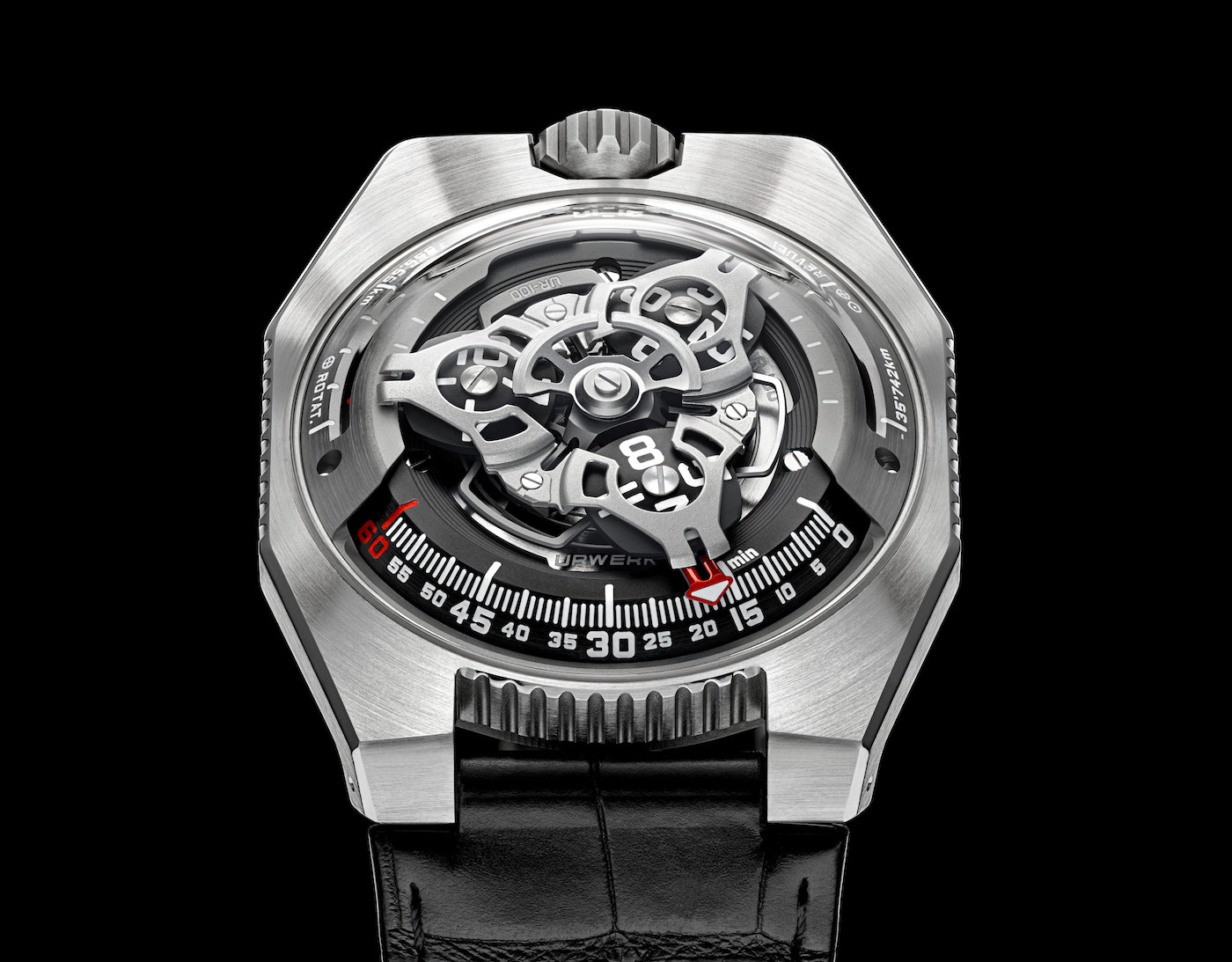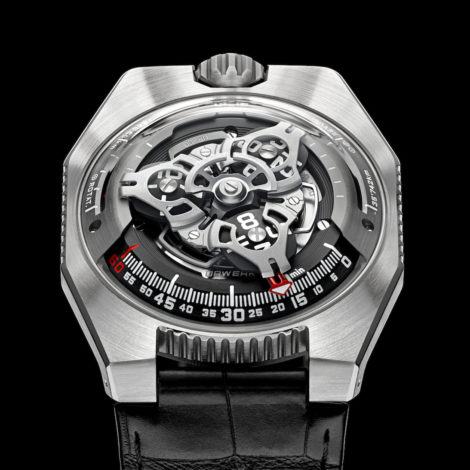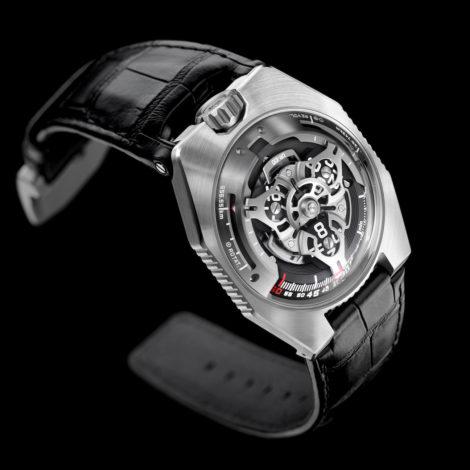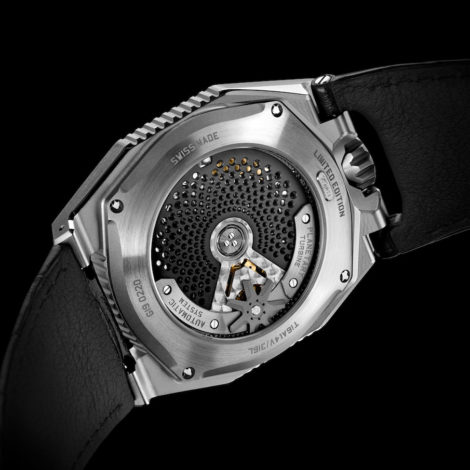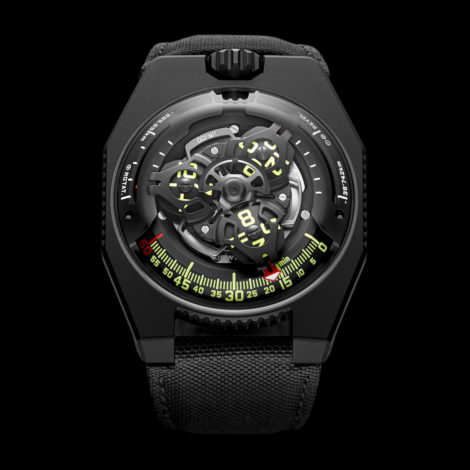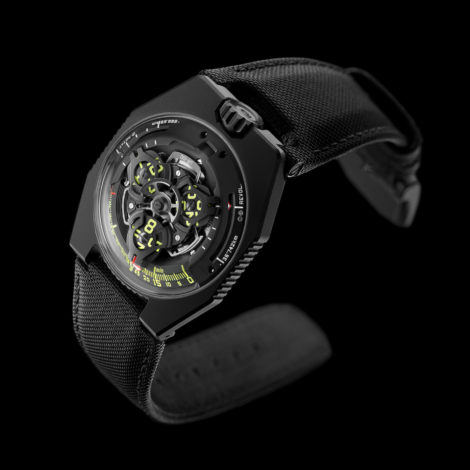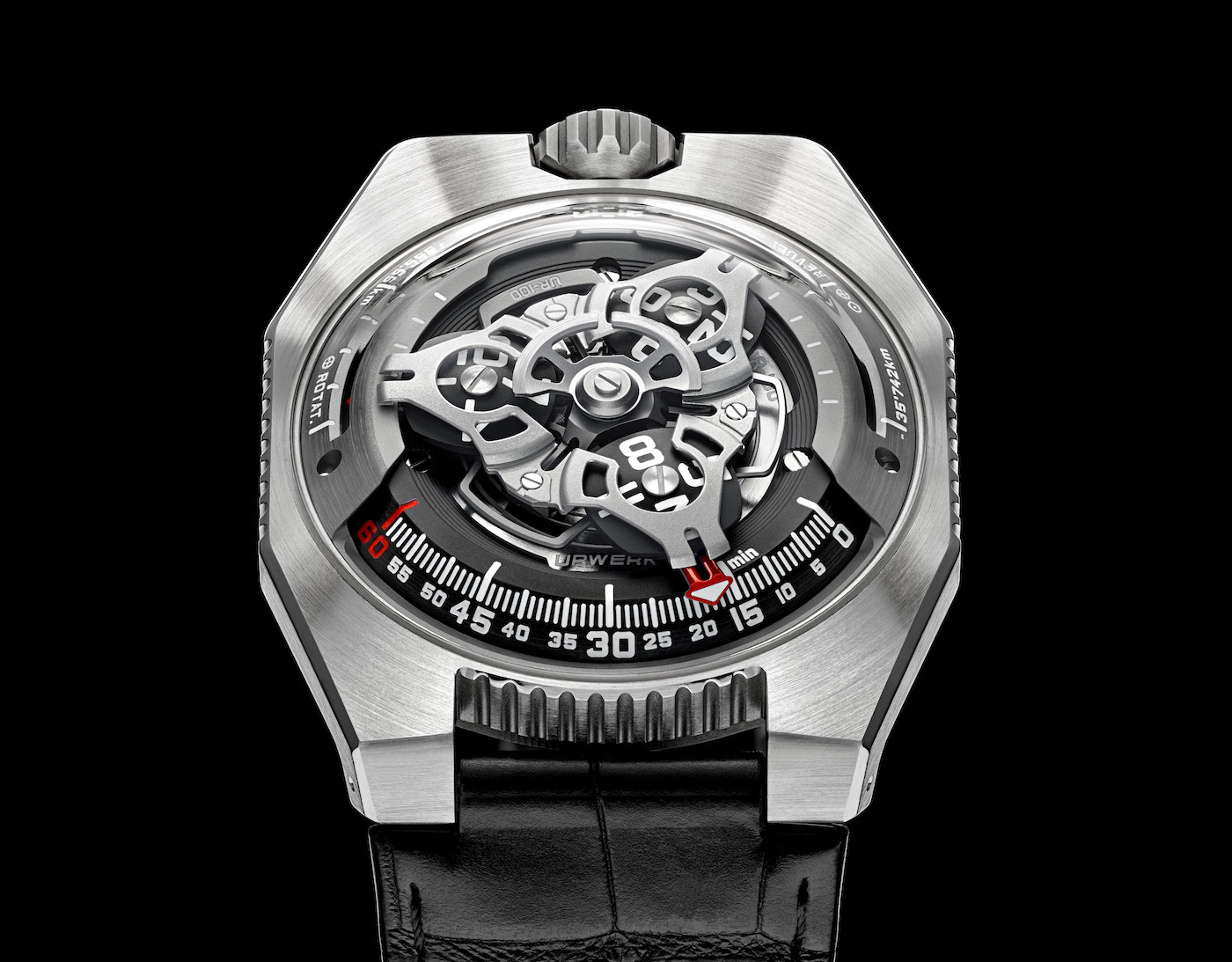
Known for its dizzying orbital displays, URWERK is a brand more than comfortable with challenging its audience. While many of this madcap company’s creations seem complicated at first, the time-telling mechanisms employed are surprisingly intuitive. Thankfully, reading them at a glance does not take that long to master. Here, however, we have something less common for the most uncommon of brands: The URWERK UR-100 SpaceTime does not just track the time, it also tracks the journey of planet Earth and those of us clinging to its surface as it hurtles through the heavens.
This new model from URWERK takes the brand’s orbital concept to the next level. In previous models, the time has been indicated by a series of arrows or pointers, which operate on a relay system, with one taking over from the other when its job is done. Historically, the pointer that has just finished its shift would disappear for another two cycles, before reappearing at the start of the minute track once more. In the URWERK UR-100 SpaceTime, however, each of the three red markers remains active for the majority of their journey around the dial. They take turns in measuring the time, followed by the distance traveled on Earth, and then the distance traveled by Earth.
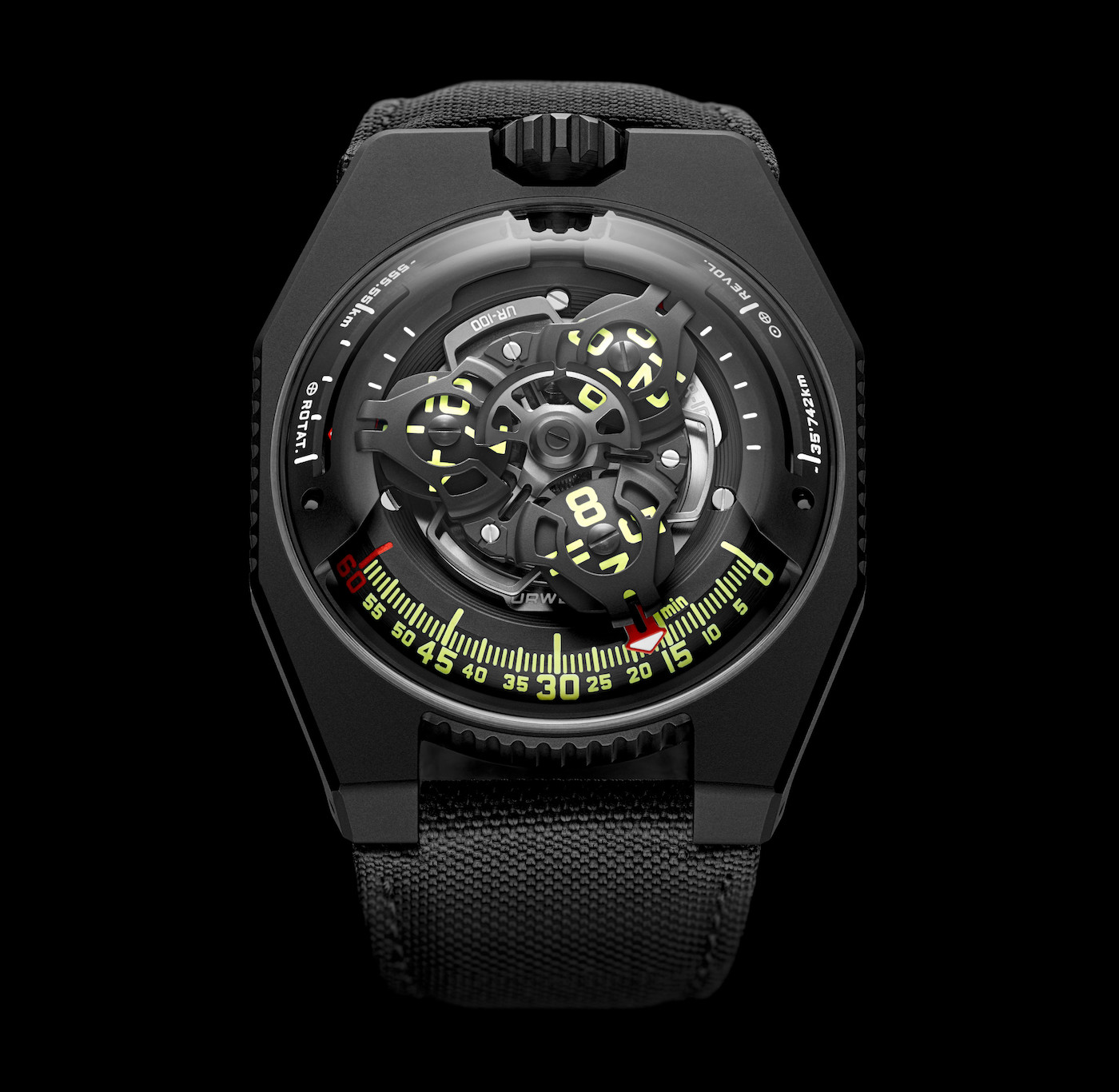
This model has two “cut-out” registers in addition to the time display. The time can be read using the bottom half of the dial. The hour is displayed on the “active” minute hand near the center of the dial. In the above picture, for example, the time is 8:18.
The additional registers occupy either side of the upper half of the dial. On the left, between the traditional positions of 9 and 10 o’clock, there is a register showing the distance travelled on Earth between 0 and 555km. Such a distance takes almost exactly 20 minutes to cover if you are standing on the equator and assuming the Earth is rotating on its axis at its “average” speed. It is not the same as the distance traveled by the Earth, which is expressed by the register on the right-hand side of the dial between the traditional positions of 2 and 3 o’clock.
The Earth travels (roughly) 35,740 km through space every 20 minutes. The progress of the journeys both on and by Earth is indicated by the tip of the red arrow that will, after a two-hour break, take up its role as the prime time-teller once more.
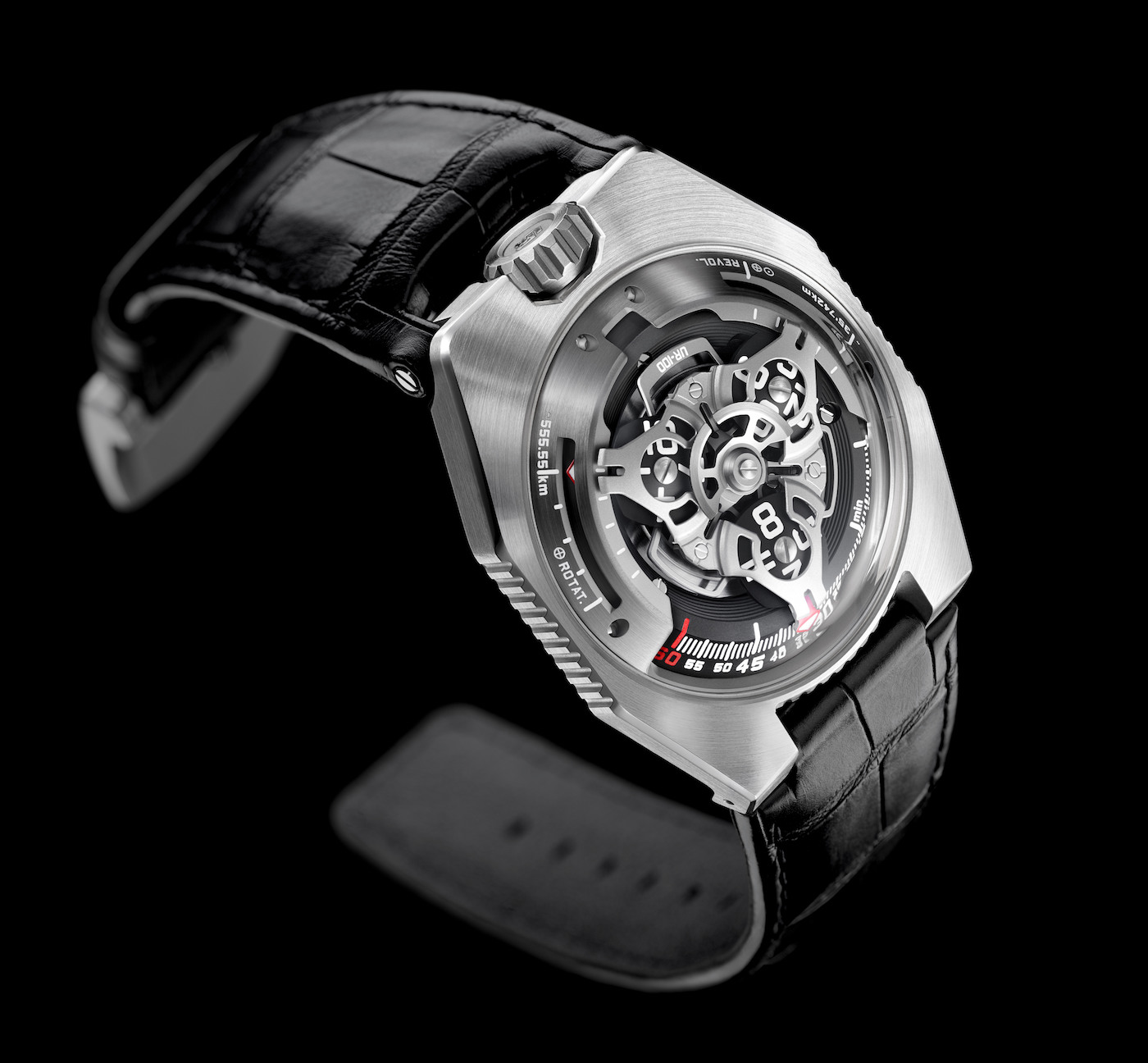
So, what’s the verdict? Well, although the information presented is a lot of fun, it is not as practical as, say, a chronograph (and many will happily debate the practicality of those if given half the chance). It’s a nice way to make a dial more active, and the novelty of that is appreciated, but from a horological perspective, it is a bit of a shortcut. Theoretically, you could take anything that consistently takes 20 minutes to occur and make a scale based around that. For example, you could have a scale expressing the distance traveled by light from the sun in 20 minutes, or the distance traveled by Halley’s Comet in the same amount of time. The clever thing is, the scale is so esoteric and practically vague it could be tailored to almost anything. Useful? No. Devilishly creative use of space? Yes. Entirely URWERK? Undoubtedly.
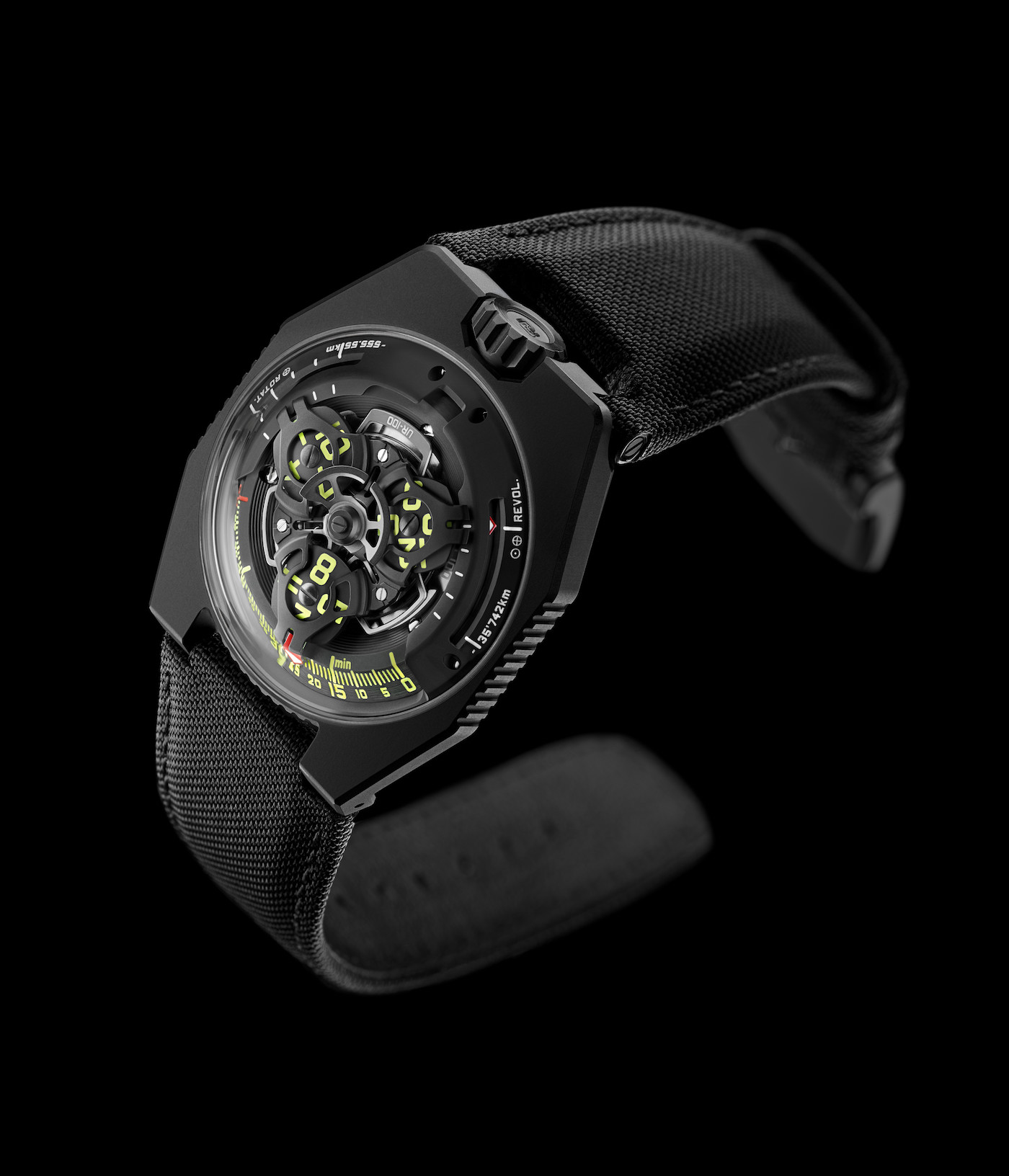
The URWERK UR-100 SpaceTime is powered by Caliber 12.01. The 12.01 is a pleasingly mature movement that concerns itself with longevity rather than just simple function or attractiveness. The rotor is protected from significant shock by a component known as the Windfäng (which is Swiss-German for “air trap”). This shock-reduction system minimizes the stress experienced by the rotor bearing over time. The rotor itself has a larger-than-average diameter, which reduces its mass. This also results in less peripheral stress on the central rotor bearing.
The tolerances of Caliber 12.01 are extremely tight, due, in large part, to the minimal clearance between the three rotating “hands” and the three-dimensional “cut-out” registers as they travel between them. And the sizes at play here are much reduced by the fact that this watch is a surprisingly wearable 41mm-wide (14mm-thick and 49.7mm lug-to-lug). A 28,000vph operating frequency and a 48-hour power reserve are about the bare minimum we would expect from a piece this refined. As always, I would have preferred a lower frequency and higher power reserve, especially given the absence of a going seconds indicator.
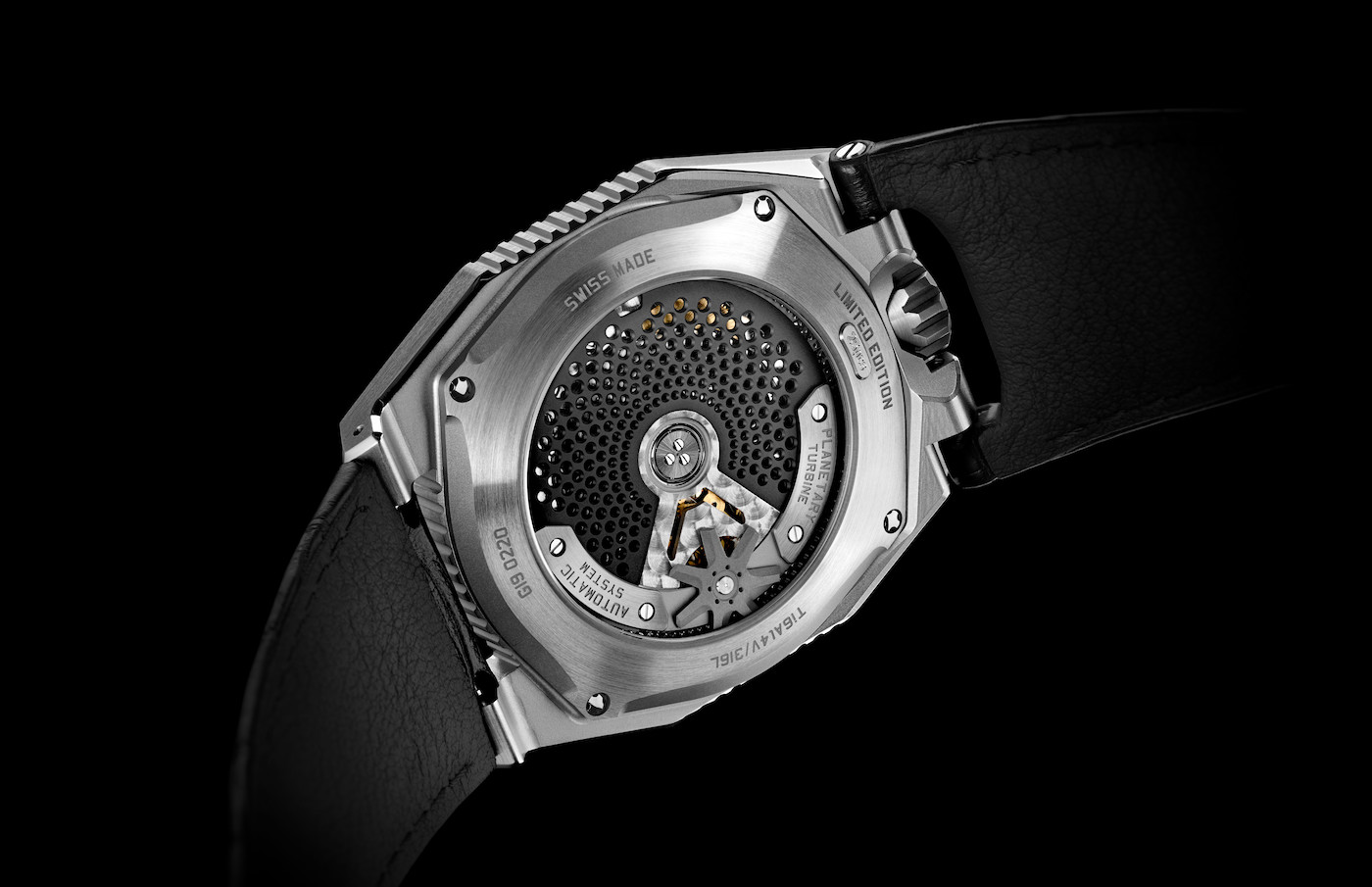
Ultimately, the URWERK UR-100 SpaceTime is a philosophical timepiece. The brand has never pretended to be anything other than wildly creative and fearlessly adventurous. We should expect nothing less from the makers who brought us the URWERK UR-1001 Titan Pocket Watch for the wrist or the URWERK UR-111C Cobra watch. There will be many who ask why the designers bothered but oftentimes, in the case of URWERK, the question is really, “Why not?”
Priced at CHF 48,000 before taxes, the URWERK UR-100 is available in two editions: The UR-100 Iron (which is somewhat confusingly made from titanium and steel), and the UR-100 Black (also made from titanium and steel, but coated with black DLC). Both styles will be limited to 25 pieces each and are available now. Learn more about the URWERK experience at urwerk.com.

